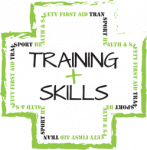One of the things we look forward to in summer is warmer weather. The average UK daytime temperate is 14 °C and varies between 18-25 °C over the course of the year. The few weeks over the summer when the temperature rises are generally a cause for celebration. However, when things get hotter it’s not always good news.
In the workplace, seasonal weather can make things uncomfortable. Rooms become overheated, uniforms uncomfortable and concentration on the task at hand is challenging. When a heatwave hits the UK, as in the summer of 2022, and temperatures are over 30 °C then workplaces will find that they need to consider their working practices to ensure that health and safety is a priority.
Even on days where the weather isn’t hitting the headlines. It’s worth being aware of the impact much warmer days can have and considering what might need to be put in place to mitigate risks and keep employees, and customers, comfortable.

What’s the maximum temperature for a workplace?
One of the first questions is always about the legal limits around temperatures in workplaces. The legislation which covers this is The Workplace (Health, Safety and Welfare) Regulations 1992. Under this, the responsibility of employers is to provide a ‘reasonable’ temperature’. This means that there is no set minimum or maximum temperature although there are guidelines for what is acceptable. For example, Unison suggests working temperatures of 16°C to 24°C/61°F to 72°F are considered comfortable. The range is to allow for different levels of physical activity in the work. HSE draws attention to ‘radiant temperature, humidity and air velocity’ and the interaction and impact of these in significantly warmer conditions.
Workplace actions for a heatwave
There’s no doubt that a run of hot days is disruptive to the productivity of the workplace. By thinking ahead and planning how to cope you’ll ensure the safety of your workforce and stand a better chance of maintaining some level of productivity.
Assess the risk from hot days
Start with a risk assessment based on the type of workplace and the activities carried out. If the workplace is outside, then the assessment will look different to that for an office. Bear this in mind and carry out separate assessments for different activity areas in your business. As part of this work, you may want to gather data in order to be aware of the differing temperatures across your building or site.
Once you have a fuller picture, you’ll be better placed to consider the mitigations that could be put in place including use of blinds and air conditioning units. Don’t forget to take into account how crowded work areas are and access to cold water for hydration.

Speak to workplace first aiders
Hopefully, with the right mitigations put in place, no one will become ill as a result of the heat. But you need to be prepared in case they do. Ensure that first aiders in the workplace are aware of the situation, including any problem areas.
Share information about heat stroke and heat exhaustion with them (as well as the rest of the workforce) and ensure that they know what to do. It might also be a good time to consider any staff with medical conditions who will experience and may be the first to experience adverse effects.
Be flexible
Actions to combat heat don’t have to be complicated or expensive. This can be easier to apply in some industries and areas of work than in others and safety always comes first. However, where relaxing uniform restrictions or allowing working in a different, cooler space is possible then consider it part of the solution. It won’t always be possible. Clothing requirements, such as closed-toe shoes, are often there for a reason! Allowing working from home, if appropriate, also removes pressure from roads and public transport systems which may develop issues in extreme heat.

